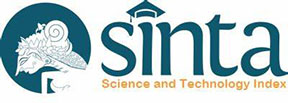The Effect of Trichoderma sp on the Intensity of Fusarium Disease and Production of Shallot
DOI:
https://doi.org/10.32734/jopt.v7i2.4581Keywords:
Trichoderma, fusarium wilt, production, shallotAbstract
Fusarium wilt disease can cause damage and reduce the yield of shallot. Trichoderma sp is a biological agent that can be used to reduce the incidence of fusarium wilt disease in shallot. This study aims to determine the effect of Trichoderma sp on the intensity of fusarium wilt attack and shallot production. This research was conducted in Salodik Village, Luwuk Utara District, Banggai Regency, using a non-factorial randomized block design consisting of five treatments with four replications, namely: P0 (Control), P1 (10 gr Trichoderma sp./liter of water), P2 (12 gr Trichoderma sp./liter of water), P3 (14 gr Trichoderma sp./liter of water) and P4 (16 gr Trichoderma sp./liter of water). The results showed that giving Trichorderma sp had a very significant effect on the average intensity of fusarium wilt disease and had a significant effect on the average production of shallot. The provision of 10 gr Trichorderma sp /liter of water is the best treatment to reduce the intensity of fusarium wilt attack and increased the average production of shallot.
Downloads
References
Alfizar, Marlina, Hasanah N. 2011. Upaya Pengendalian Penyakit Layu Fusarium oxysporum dengan Pemanfaatan Agen Hayati Cendawan FMA dan Trichoderma harzianum. Jurnal Floratek 6(1): 8 – 17
Aulia F, Susanti H, Fikri EN. 2016. Pengaruh pemberian pupuk hayati dan mikoriza terhadap intensitas serangan penyakit layu bakteri (Ralstonia solanacearum), pertumbuhan, dan hasil tanaman tomat. Jurnal ZIRAA’AH, 41(2): 250-260. http://dx.doi.org/10.31602/zmip.v41i2.428
Baihaqi A, Nawawi M, Abadi AL. 2013. Teknik aplikasi Trichoderma sp. terhadap pertumbuhan dan hasil tanaman kentang (Solanum tuberosum L.). Jurnal Produksi Tanaman, 1(3): 30-39
Balai Penyuluhan Pertanian Kecamatan Luwuk Utara. 2020. Luas tanam, produksi dan produktivitas bawang merah di Kecamatan Luwuk Utara.
Brotman Y, Kapuganti JG, Viterbo A. 2010. Trichoderma. Current Biology, 20(9):390-291. https://doi.org/10.1016/j.cub.2010.02.042
Bukhari, Safridar N. 2018. Pengaruh pemberian Trichoderma untuk mengendalikan penyakit layu fusarium pada beberapa jenis pisang di lahan yang telah terinfeksi. Jurnal Ilmiah Pertanian, 15(1): 23-34. https://doi.org/10.31849/jip.v15i1.1480
Bunbury-Blanchette AL, Walker AK. 2019. Trichoderma species show biocontrol potential in dual culture and greenhouse bioassays against Fusarium basal rot of shallot. Biological Control, 130:127-135. https://doi.org/10.1016/j.biocontrol.2018.11.007
Darsan S, Sulistyaningsih E, Wibowo A. 2016. Various shallot seed treatments with Trichoderma to increase growth and yield on sandy coastal. Ilmu Pertanian (Agricultural Science), 1(3):94-99. https://doi.org/10.22146/ipas.12564
Deden, Umiyati U. 2017. Pengaruh inokulasi Trichoderma sp dan varietas bawang merah terhadap penyakit moler dan hasil tanaman bawang merah (Allium ascalonicum L). Jurnal Kultivasi. 16(2): 340-348
Direktorat Perlindungan Tanaman Pangan. 2018. Petunjuk Teknis Pengamatan dan Pelaporan Organisme Pengganggu Tumbuhan Serta Dampak Perubahan Iklim. Jakarta: Kementerian Pertanian
Halifu S, Deng X, Song X, Song R. 2019. Effects of two Trichoderma strains on plant growth, rhizosphere soil nutrients, and fungal community of Pinus sylvestris var. mongolica annual seedlings. Forests, 10(9): 1-17. https://doi.org/10.3390/f10090758
Haring F, Rostia, Syam’un E, Ginting NM. 2019. Effect of Trichoderma sp. and Streptomyces sp. on the growth and production of true seed shallots (TSS). IOP Conference Series: Earth and Environmental Science, 343 (2019):1-8. https://doi.org/10.1088/1755-1315/343/1/012020
Harman GE. 2006. Overview of mechanisms and uses of Trichoderma spp. Phytopathology, 96(2):190-194. https://doi.org/10.1094/phyto-96-0190
Lorito M, , Woo SL Harman GE, Monte E. 2010. Translational research on Trichoderma: from ‘Omics to the field. Annual Review of Phytopathology, 48(1):395-417. https://doi.org/10.1146/annurev-phyto-073009-114314
Mirsam H. 2016. Tingkat serangan organisme pengganggu
tumbuhan pada pertanaman kacang tanah di Kabupaten Bogor, Jawa Barat. Perbal: Jurnal Pertanian Berkelanjutan. 4(3): 1-8. http://dx.doi.org/10.30605/perbal.v4i3.594
Ningsih H, Hastuti US, Listyorini D. 2016. Kajian antagonis Trichoderma spp. terhadap Fusarium solani penyebab penyakit layu pada daun cabai rawit (Capsicum frutescens) secara in vitro. Proceeding Biology Education Conference, 13(1): 814-817
Ramadhina A, Lisnawita, Lubis L. 2013. Penggunaan jamur antagonis Trichoderma sp. dan Gliocladium sp. untuk mengendalikan penyakit layu fusarium pada tanaman bawang merah (Allium ascalonicum L.). Jurnal Online Agroekoteknologi, 1(3): 702-710
Rusita I, Sasongko H. 2020. Effectivity of Trichoderma harzianum as bio-fungicide against moler disease and bio-stimulator of shallot growth. Journal of Agri-Food Science and Technology, 1(1): 12-17. https://doi.org/10.12928/jafost.v1i1.1941
Saba H, Vibhash D, Manisha M, Prashant KS, Farhan H, Tauseef A. 2012. Trichoderma – a promising plant growth stimulator and biocontrol agent. Mycosphere, 3(4):524-531. https://doi.org/10.5943/mycosphere/3/4/14
Safitri YA, Hasanah U, Salamiah, Samharinto, Pramudi MI. 2019. Distribution of major diseases of shallot in South Kalimantan, Indonesia. Asian Journal of Agriculture, 3(2):33-40. https://doi.org/10.13057/asianjagric/g030201
Santoso SE, Soesanto L, Haryanto TAD. 2007. Penekanan hayati penyakit moler pada bawang merah dengan Trichoderma harzianum, Trichoderma koningii, dan Pseudomonas fluorescens p60. Jurnal HPT Tropika, 7(1):53-61. http://dx.doi.org/10.23960/j.hptt.17%25p
Sintayehu A, Sakhuja PK, Fininsa C, Ahmed S. 2011. Management of fusarium basal rot (Fusarium oxysporum f. sp. cepae) on shallot through fungicidal bulb treatment. Crop Protection, 30(5): 560-565. https://doi.org/10.1016/j.cropro.2010.12.027
Valentino, Nasir B, Toana MH. 2020. Pengaruh ekstrak akar tuba Derris elliptica Benth terhadap mortalitas Pomacea canaliculata Lamarck. (Mesogastropoda: Ampullariidae) pada padi Oryza sativa L. Jurnal Agroland, 27(1): 89-98
Downloads
Published
How to Cite
Issue
Section
License
Copyright (c) 2020 Jurnal Pertanian Tropik

This work is licensed under a Creative Commons Attribution-ShareAlike 4.0 International License.






















